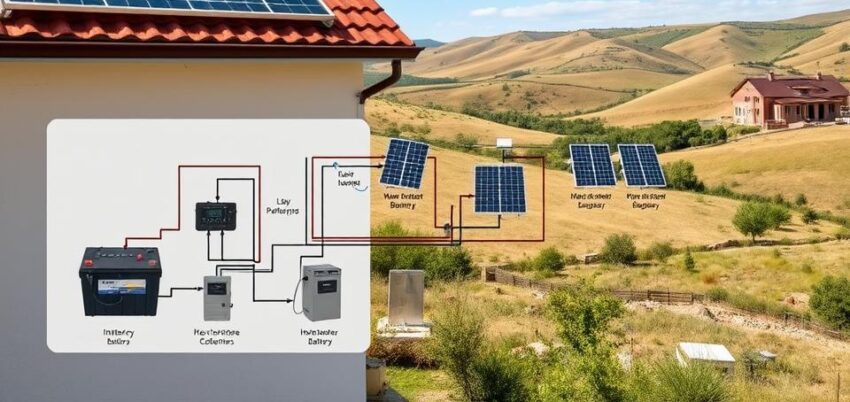Building your solar system is a great way to reduce energy costs and live sustainably. With some planning and the right equipment, you can create a reliable system independent of the grid.
Here’s a simple guide to get started:
1. Figure Out How Much Power You Need
Start by calculating how much power your household consumes. You’ll need to know the energy requirements of your daily appliances. Write down the wattage of each item you want to power (such as lights, fridge, TV, etc.) and estimate how many hours each one will be running. This will give you an idea of your total energy consumption in watt-hours (Wh) per day.
For example
LED light: 10W x 5 hours = 50 Wh
Refrigerator: 150W x 8 hours = 1,200 Wh
Add everything up to find your daily total.
2. Choosing the Right Solar Panels
To meet your energy needs, choose solar panels based on their wattage.
For example, if your daily usage is 2,000Wh, you’ll need around 6-7 panels rated at 300W each. Make sure your panels will get plenty of sunlight, and consider their efficiency. Higher-quality panels may cost more upfront but will last longer and produce more energy over time. Look for panels with a 20-25 year warranty.
I recommend trying Affordable solar panels to start with.
3. How Much Battery Storage Do You Need?
To store solar energy, pick batteries that can hold 2-3 days of power. For example, if you use 2,000Wh a day, aim for 4,000-6,000Wh. Lithium-ion batteries are efficient but cost more, while lead-acid are cheaper but don’t last as long.
4. Pick a Charge Controller
A charge controller helps regulate the flow of energy from your solar panels to the batteries, making sure they don’t overcharge and get damaged.
There are two main types of charge controllers:
- PWM (Pulse Width Modulation): These are simpler and cheaper but less efficient.
- MPPT (Maximum Power Point Tracking): These are more expensive but much more efficient, especially if you have a larger system.
If you’re setting up a small system, a PWM controller might be fine, but for a bigger setup, go for an MPPT controller for maximum efficiency.
5. Choose the Right Inverter
Your solar panels produce DC (direct current) electricity, but most appliances in your home run on AC (alternating current). That’s where the inverter comes in—it converts the DC power from your solar system into AC power that your home can use.
You’ll need to make sure the inverter can handle your peak power demand. If you’re running high-powered appliances like air conditioners, you’ll need a larger inverter (around 2,000W to 3,000W). For a smaller system, a 1,500W inverter should do the job.
6. Installation
Now it’s time to install your system!
- Mount the Solar Panels: Choose a location with plenty of sunlight. You’ll need to tilt the panels at an angle to get the most sun exposure.
- Connect the Panels to the Charge Controller: Wire your solar panels to the charge controller.
- Hook Up the Charge Controller to the Battery Bank: This will store the power from your panels.
- Connect the Batteries to the Inverter: Finally, the inverter will convert the stored DC power into AC power for your home.
Be sure to follow all safety guidelines, and if you’re not comfortable with electrical work, it’s best to get a professional to help with the installation.
7. Test Your System
Once everything is hooked up, it’s time to test your system. Turn it on and check that the panels are charging the batteries and that the inverter is providing power to your appliances.
It’s also a good idea to monitor your energy usage to make sure the system is providing enough power. If you find you need more, you can always add more panels or batteries later.
8. Maintenance
After installation, it’s time to test everything. Turn on the system, and check to make sure the panels are charging the batteries, the inverter is working correctly, and the system is providing power to your home.
It’s also a good idea to monitor energy production and consumption to make sure the system meets your needs. If you find you’re using more energy than expected, you might need to add more panels or batteries.
Lastly, if Thinking about going off-grid? building your solar grid system is a great way to get away from the traditional power grid and live more sustainably. Sure, it takes a little work upfront—both in terms of time and money—but in the long run, it’ll save you a lot and help the planet. Once your system is set up, you’ll be relying on the sun to power your home, and that’s something pretty cool. With a little planning and the right tools, it’s doable, and the benefits are worth it.
